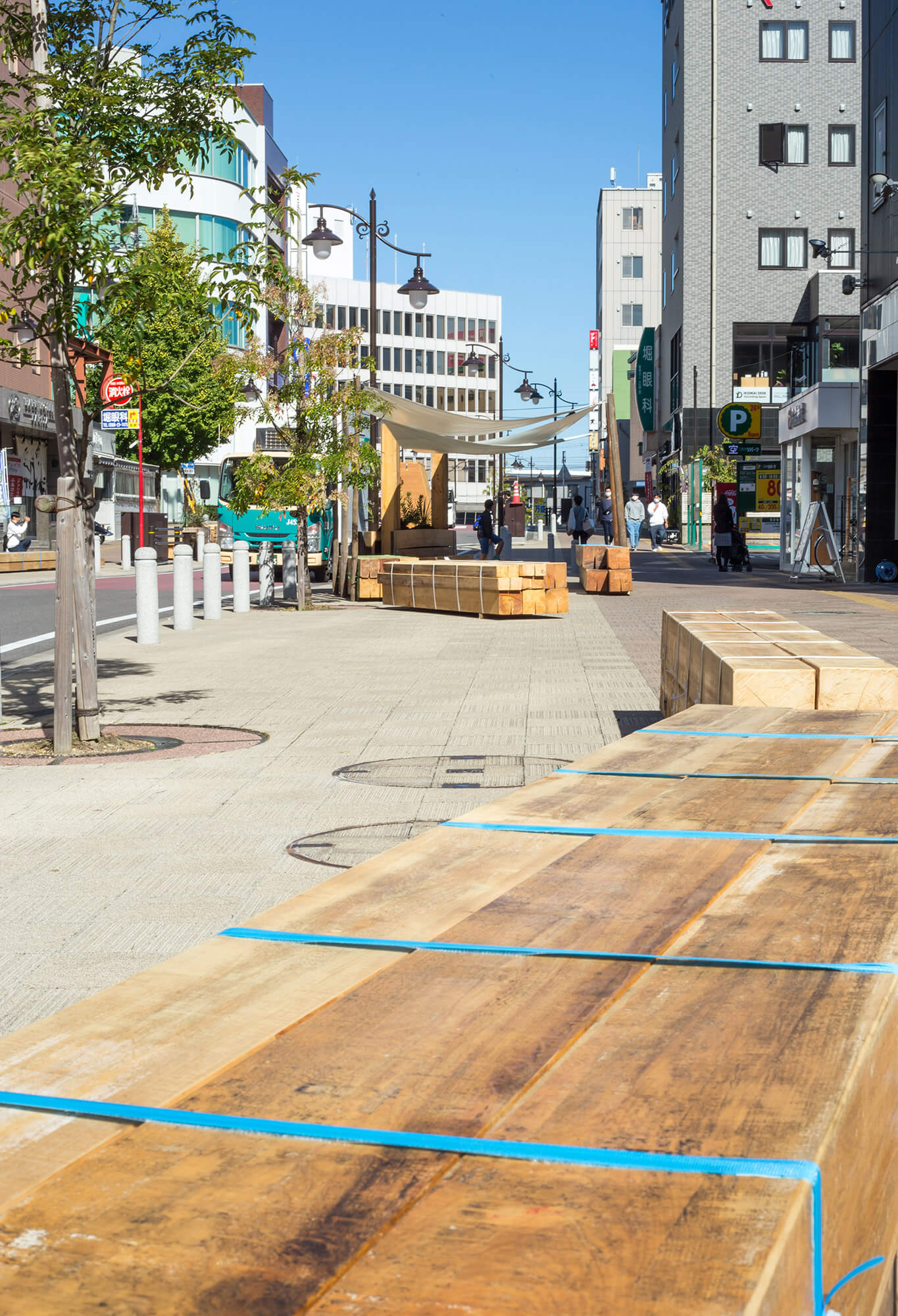
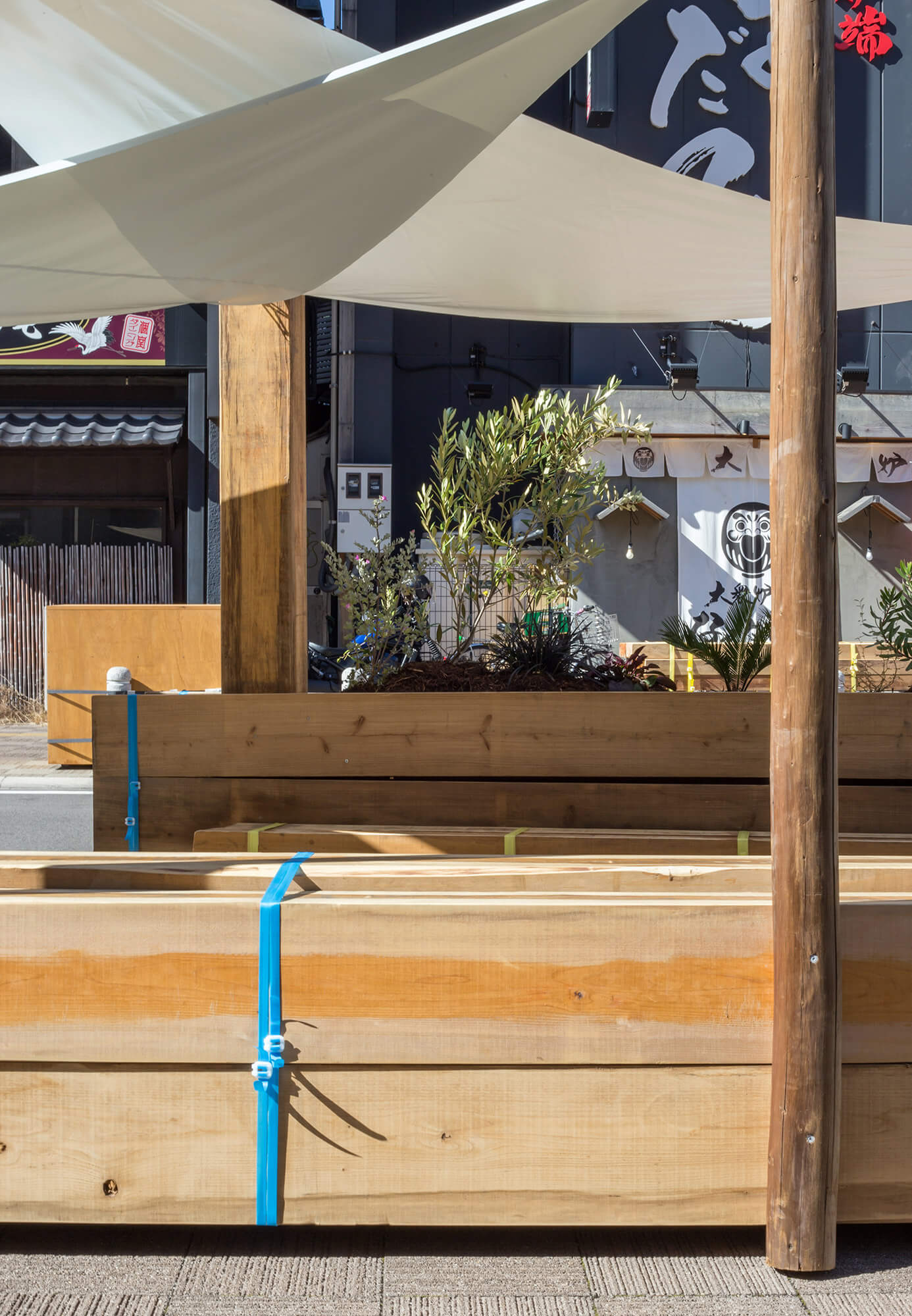
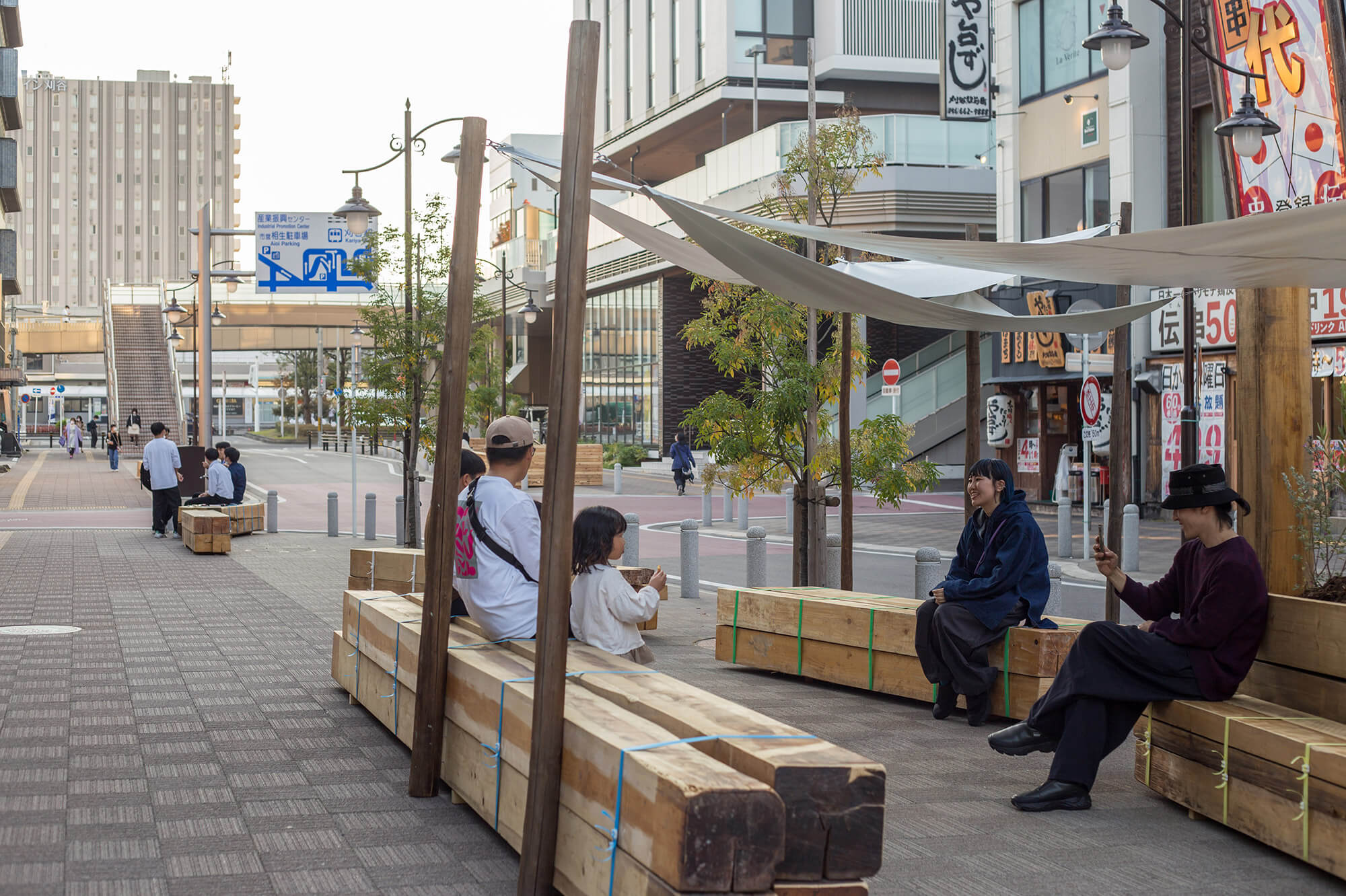
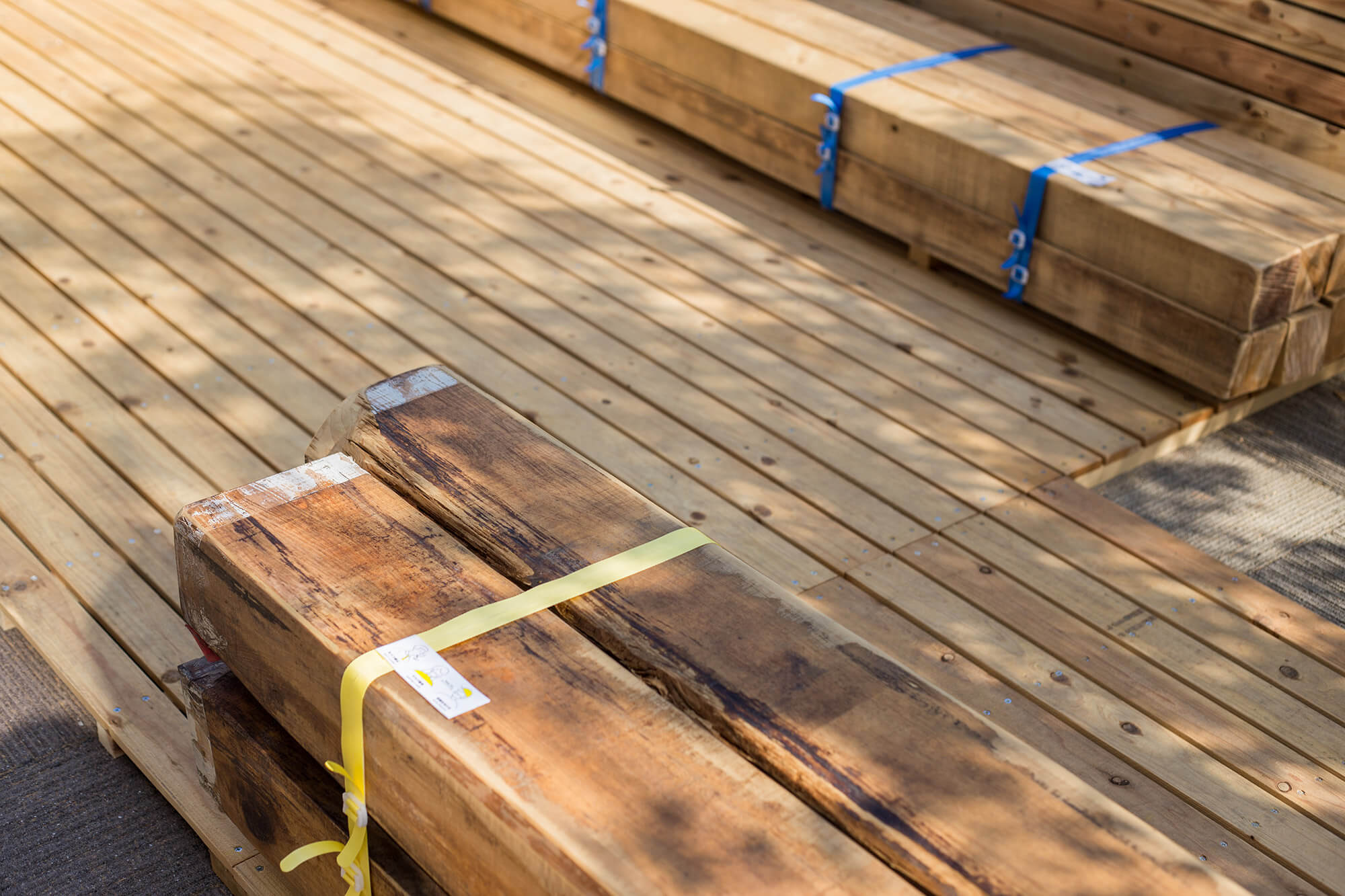
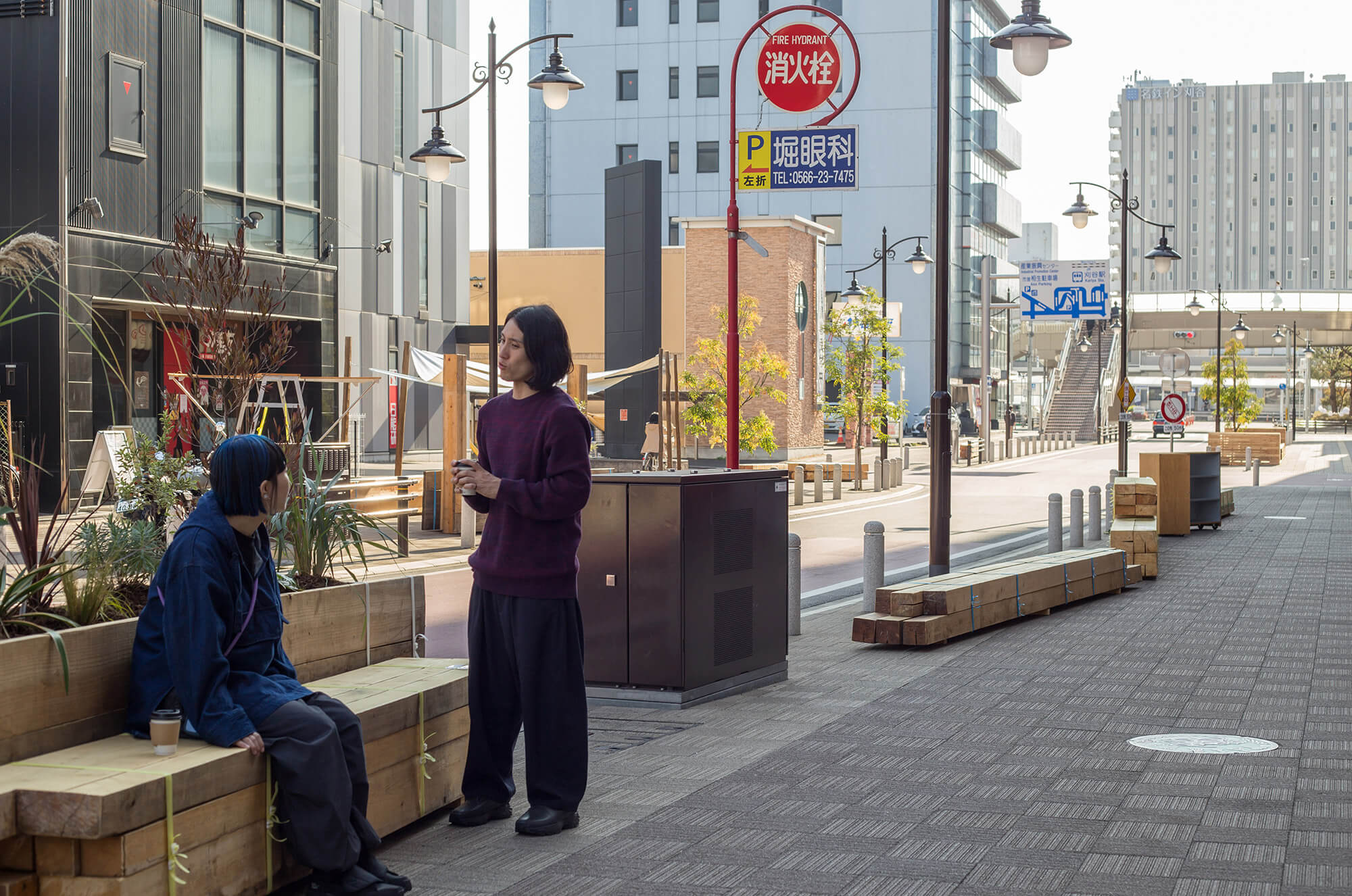
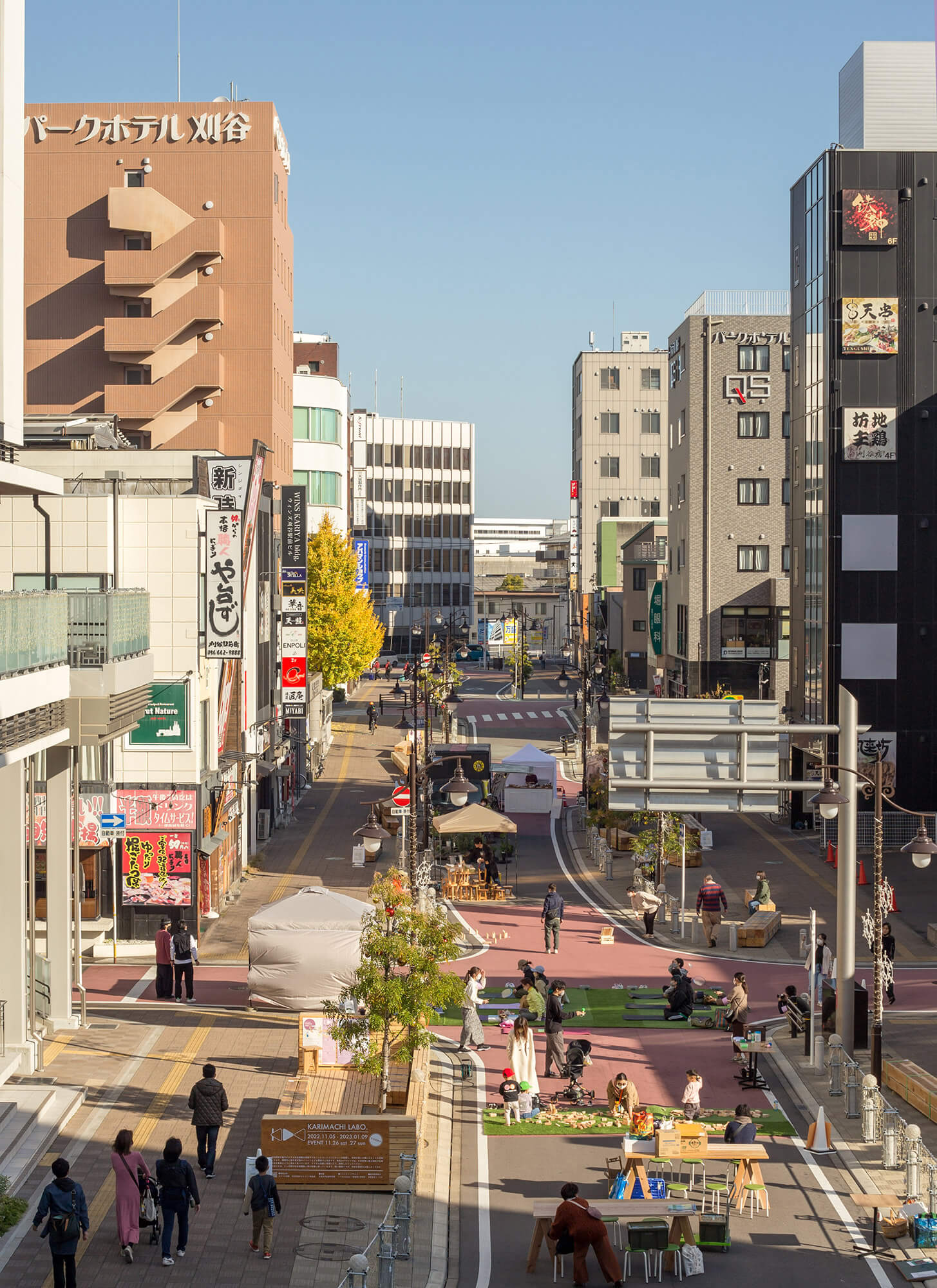
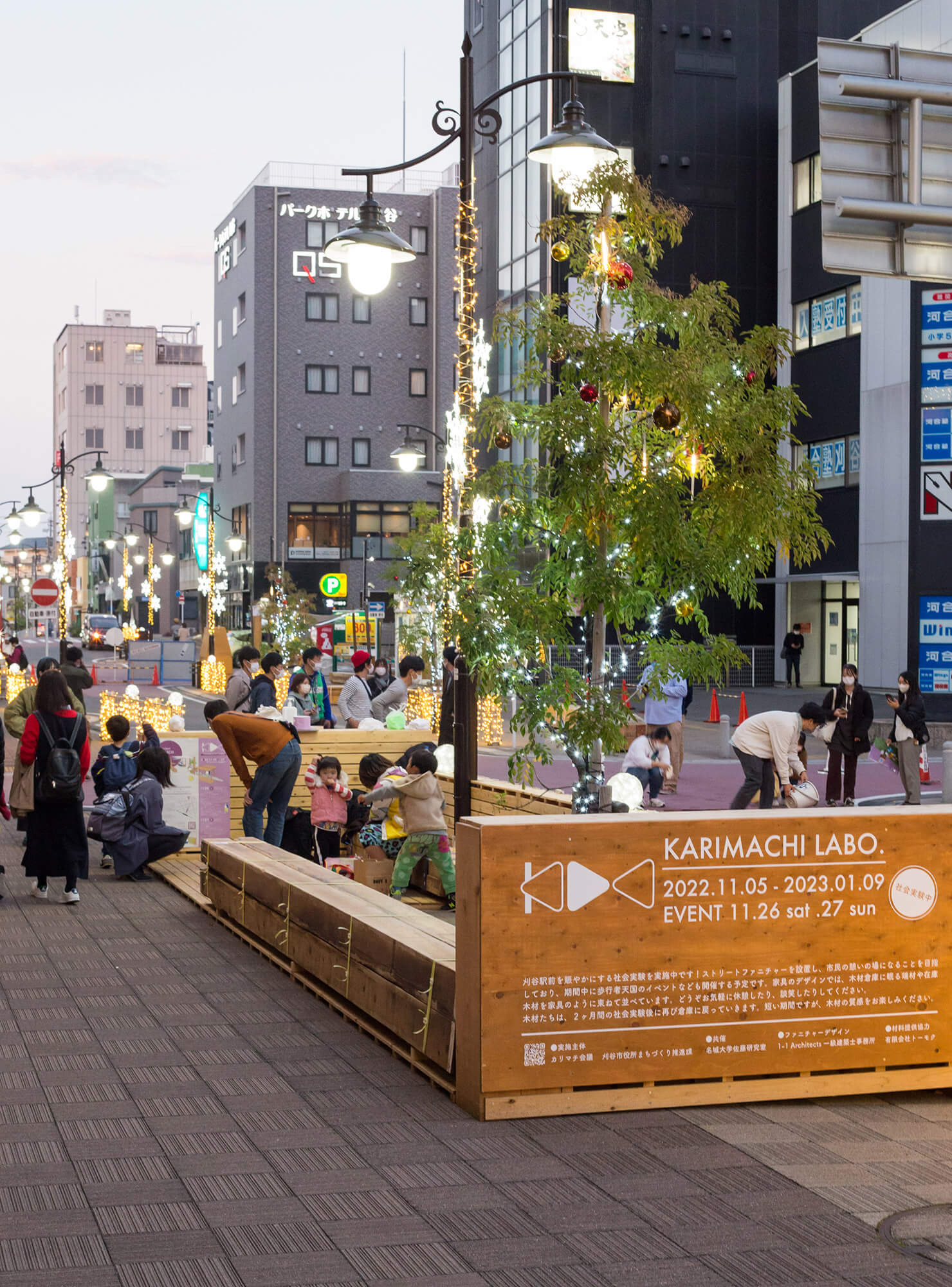
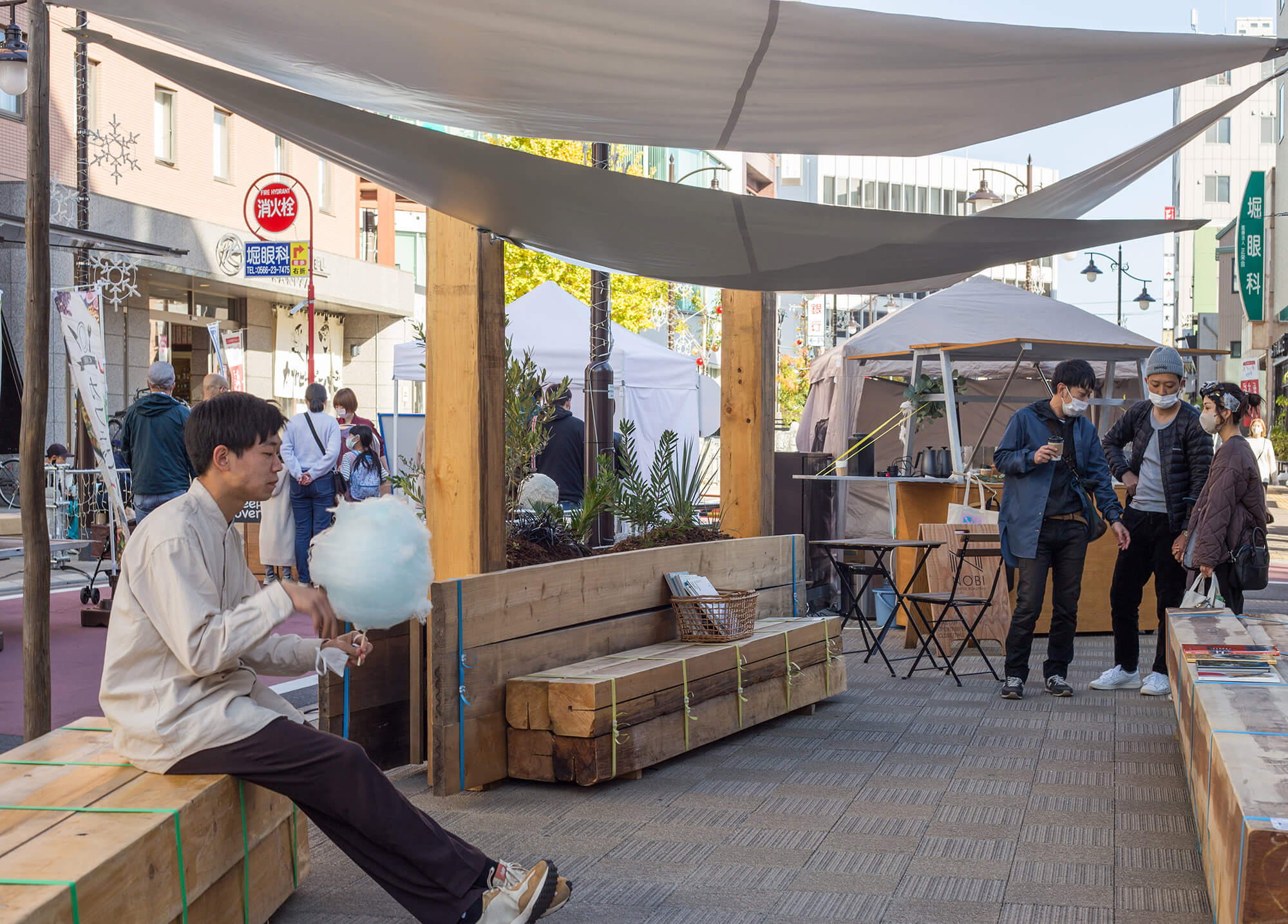
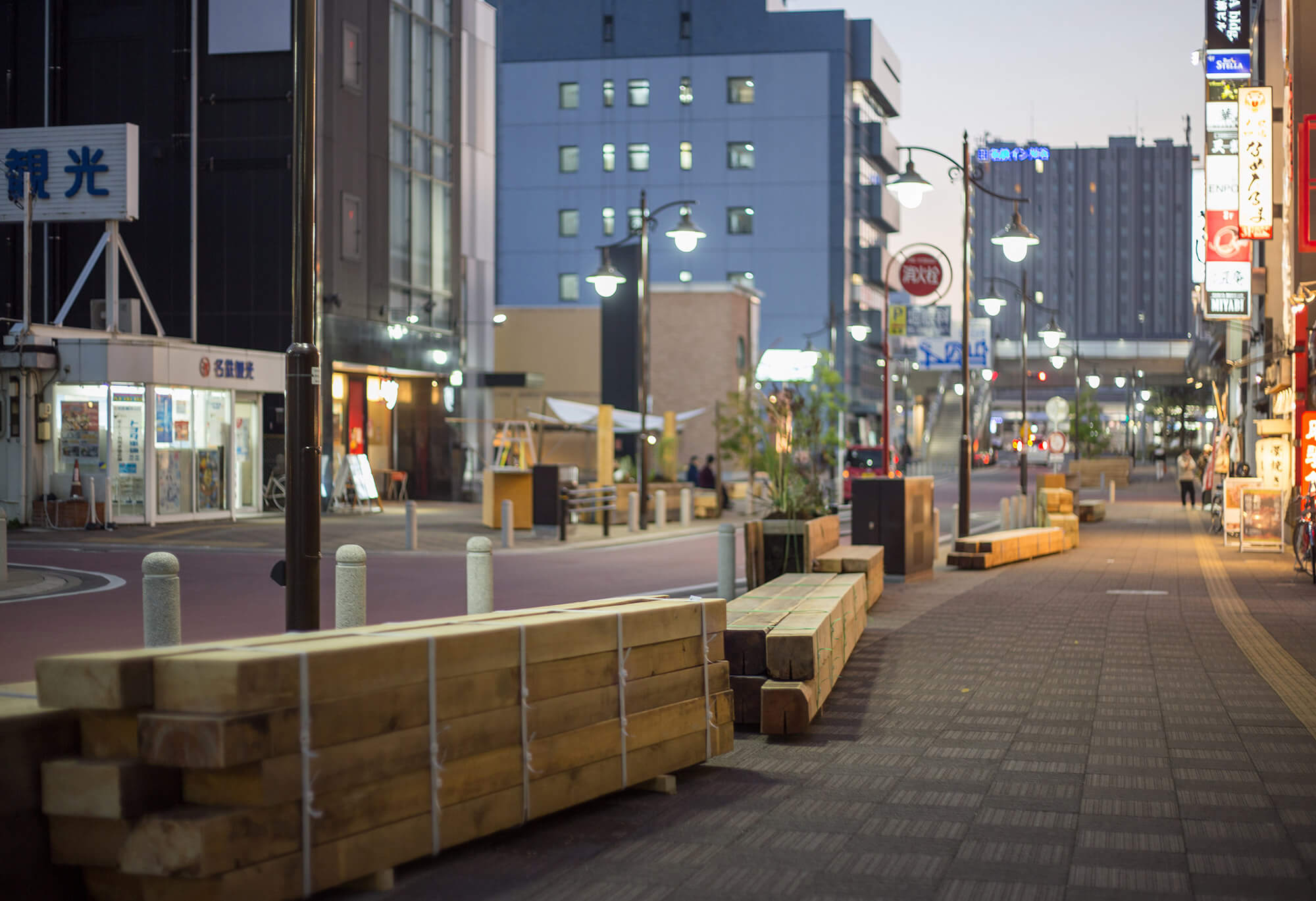
KARIMACHI STREET FURNITURE
Street furniture
Kariya Aichi, Japan
Street Furniture
Materials provided : TOMOKU Ltd.
KARIMACHI LABO. organized : KARIMACHI Conference
KARIMACHI LABO. co-sponsored : Sato Laboratory, Meijo University
Video production: Kosuke Ino
Street Furniture
Materials provided : TOMOKU Ltd.
KARIMACHI LABO. organized : KARIMACHI Conference
KARIMACHI LABO. co-sponsored : Sato Laboratory, Meijo University
Video production: Kosuke Ino
A plan for street furniture as a social experiment to be installed on Karimachi Street at the north exit of Kariya Station. The area around Kariya Station is lined with many large buildings built in a scrap-and-build style, and the sidewalks that have been similarly developed are too wide for citizens to use in a meaningful way. Given the limited budget for street furniture production on such wide sidewalks and the wide area covered, the conventional permanent installation method cannot produce a satisfactory quantity of street furniture. Therefore, it was necessary to consider how the street furniture should be produced and dismantled based on the premise of a short installation period of three months. There are not many examples of street furniture that can be recycled or upcycled, even though they can be reused after they have served their purpose. Our goal was to create a material cycle that would allow for reuse of materials in their material state after installation.
Specifically, we focused on scrap lumber and used lumber lying in stock at many lumberyards in Japan. By considering these stocked lumber as a resource lying dormant in the city, and by following the process of renting, using for street furniture, and returning, rather than purchasing new materials, we were able to secure a large amount of materials that could be installed on a large site while reducing costs. In Kariya, as in other areas of Japan, there is a lumber company with a large inventory of lumber, and it was possible to rent materials from a partner company, TOMOKU Ltd. However, rented inventory lumber had to be returned in the same condition and could not be processed, such as drilling holes. Therefore, we focused on the PP bands used to transport and store the lumber, and created street furniture using a simple method of tying the lumber together with PP bands while changing the arrangement of the inventory lumber. By moving the storage location of the inventory from the warehouse to the street and rearranging them a little like furniture, the street furniture fulfilled its function and created a lively atmosphere in the street.
Specifically, we focused on scrap lumber and used lumber lying in stock at many lumberyards in Japan. By considering these stocked lumber as a resource lying dormant in the city, and by following the process of renting, using for street furniture, and returning, rather than purchasing new materials, we were able to secure a large amount of materials that could be installed on a large site while reducing costs. In Kariya, as in other areas of Japan, there is a lumber company with a large inventory of lumber, and it was possible to rent materials from a partner company, TOMOKU Ltd. However, rented inventory lumber had to be returned in the same condition and could not be processed, such as drilling holes. Therefore, we focused on the PP bands used to transport and store the lumber, and created street furniture using a simple method of tying the lumber together with PP bands while changing the arrangement of the inventory lumber. By moving the storage location of the inventory from the warehouse to the street and rearranging them a little like furniture, the street furniture fulfilled its function and created a lively atmosphere in the street.